1. Choosing the Right Orchid
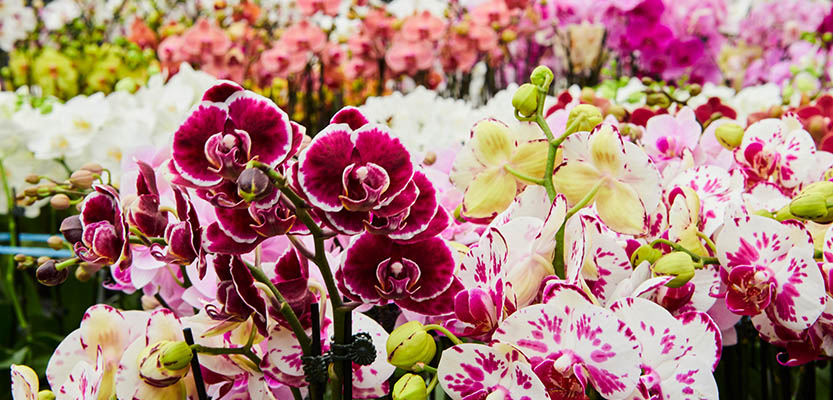
Different orchids have different needs, so choose a type that suits your environment and experience level. The most popular types for beginners include:
Phalaenopsis (Moth Orchid): Resilient and widely available.
Dendrobium: Easy to care for and forgiving of minor mistakes.
Oncidium (Dancing Lady Orchid): Known for its long, fragrant blooms.
Cattleya: Often recognized for their large, showy flowers.
Vanda: Bright, beautiful flowers that need more light than most.
2. Light Requirements
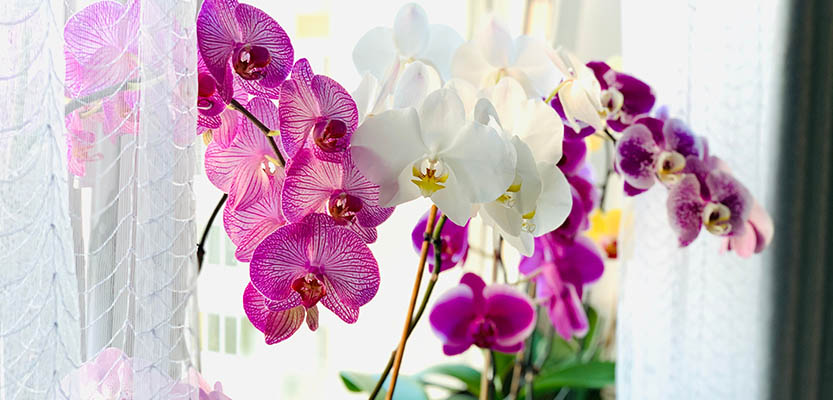
Orchids need the right amount of light to thrive:
Phalaenopsis and Paphiopedilum: Prefer moderate, indirect light. Place them in a room with bright but indirect sunlight.
Dendrobium and Cattleya: Require bright light, ideally east or south-facing windows.
Vanda: Thrive in bright, direct sunlight for part of the day but may need shade during the hottest hours.
Tip: If leaves are dark green, the orchid needs more light. If leaves are yellow or scorched, reduce sunlight exposure.
3. Temperature and Humidity
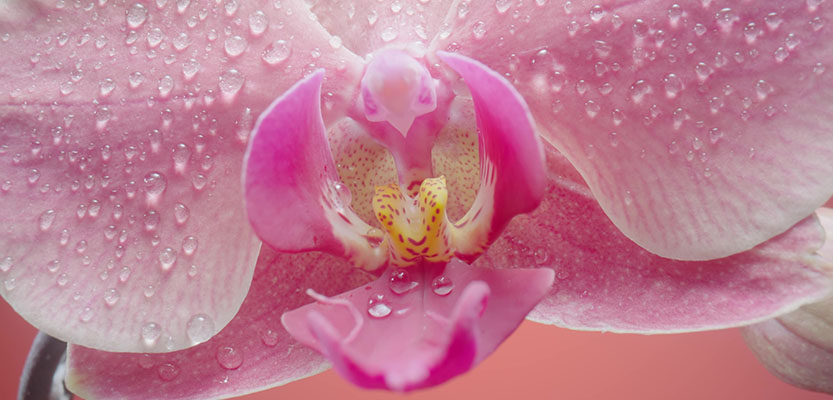
Orchids are sensitive to temperature:
Phalaenopsis: Prefer temperatures between 65–75°F (18–24°C) during the day and no lower than 55°F (13°C) at night.
Dendrobium and Cattleya: Similar ranges but can tolerate slightly higher temperatures up to 85°F (29°C) in the daytime.
Humidity: Most orchids need 50–70% humidity. If your environment is dry, place a humidity tray (a shallow tray of water with pebbles) under your orchid or use a humidifier nearby.
4. Watering
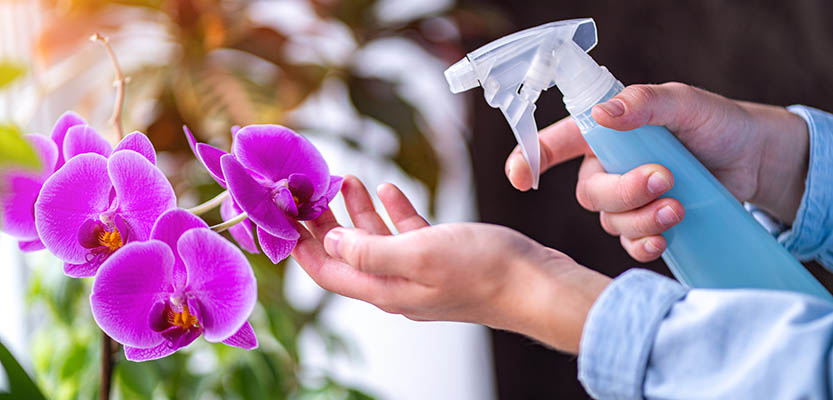
Proper watering is crucial:
Water Needs: Water about once a week, allowing the roots to dry out between waterings. Overwatering leads to root rot, while underwatering causes dehydration.
Technique: Use tepid, distilled, or rainwater. Water until it drains out from the pot, then empty excess water from the saucer.
Signs of Over- or Underwatering: Limp, yellowing leaves often indicate overwatering, while shriveled leaves suggest underwatering.
5. Potting Medium and Repotting

Orchids don't grow well in soil. Instead, they need a well-draining, airy medium:
Potting Mix: Orchid-specific mixes often contain bark, perlite, and charcoal, which provide good drainage.
Repotting: Repot every 1–2 years, ideally after blooming. Look for signs like crowded roots, mold, or a decomposing medium as cues to repot.
6. Fertilizing
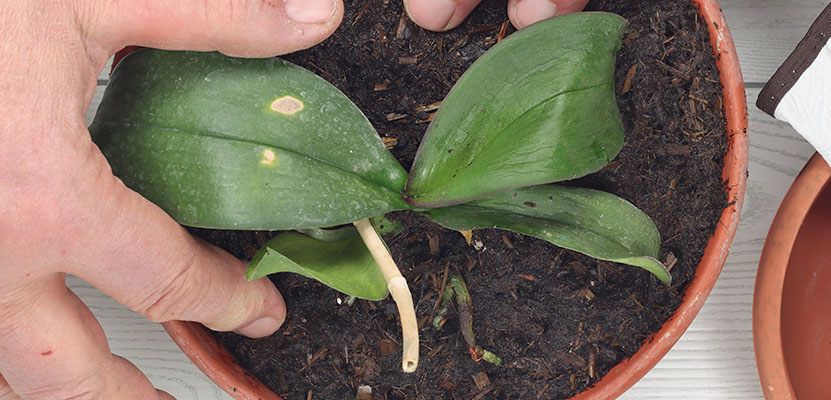
Regular fertilization helps orchids bloom and grow:
Fertilizer Type: Use a balanced, water-soluble fertilizer, diluted to half strength.
Frequency: Fertilize every two weeks during active growth (spring and summer) and once a month during fall and winter.
Best Practice: Water before applying fertilizer to avoid root burn.
7. Pruning and Grooming

After Blooming: Trim the flower spike back once it’s fully spent. For Phalaenopsis, cut just above a node to encourage a secondary spike.
Dead Leaves and Roots: Regularly remove any dead or yellowing leaves and roots.
8. Pest Management

Orchids can attract pests like aphids, spider mites, and mealybugs:
Treatment: Wipe leaves with a damp cloth or use an insecticidal soap. Neem oil also works well as a preventive treatment.
Prevention: Isolate new plants before introducing them to your orchid collection, and inspect regularly.
9. Encouraging Re-Blooming
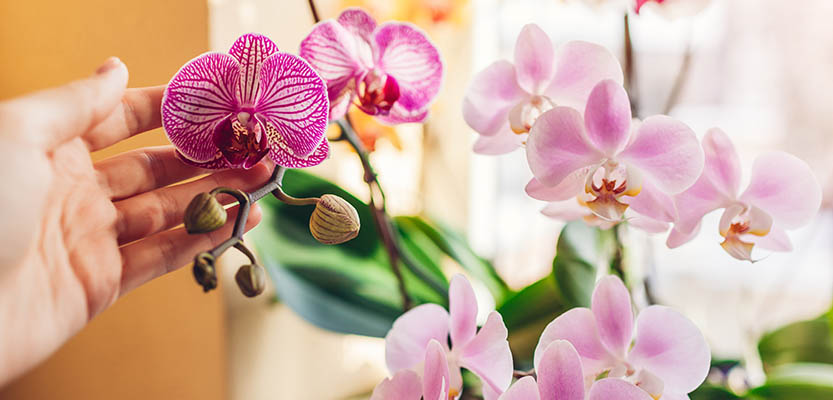
Orchids naturally have dormant periods after blooming:
Cooler Temperatures: Lower night temperatures by 10–15°F (around 50–60°F) for a few weeks to encourage Phalaenopsis to rebloom.
Light and Humidity: Continue to provide appropriate light and humidity, and increase watering frequency slightly during this period.
10. Common Problems and Solutions
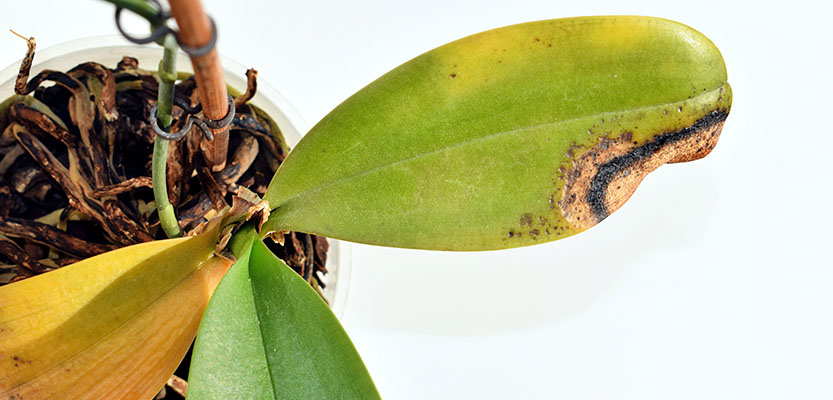
Bud Blast (when buds fall off before opening): Usually caused by sudden changes in temperature or humidity. Keep orchids in a stable environment.
Yellowing Leaves: Often due to overwatering, inadequate light, or nutrient deficiencies. Adjust watering and light as needed.
Wrinkled Leaves: Indicates dehydration; ensure you are watering regularly and consider raising humidity.
Conclusion
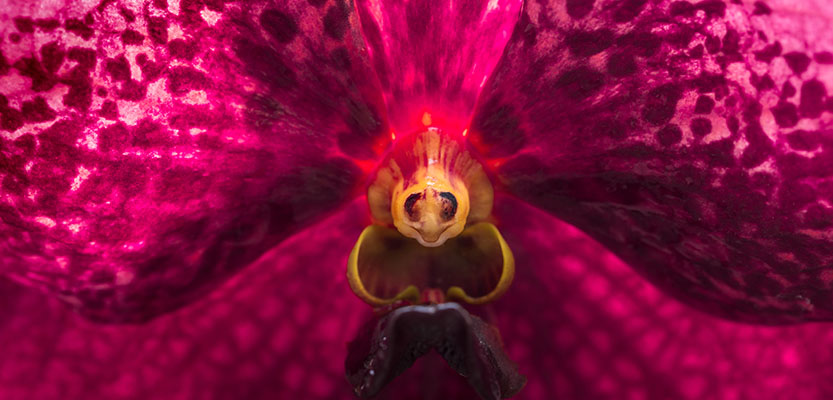
By providing the right balance of light, water, temperature, and humidity, you can enjoy beautiful orchid blooms year-round.








